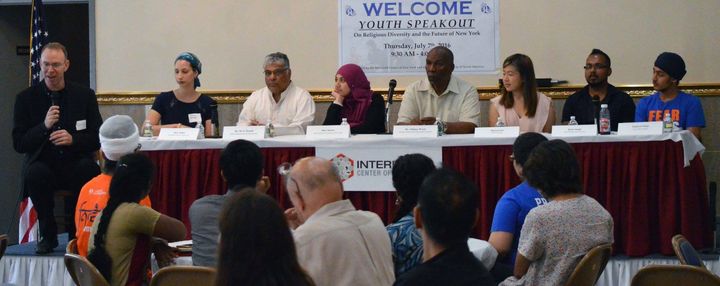
I remember how we used to talk about - or rather, not talk about - God in elementary school. Every time a student made a slight notion about their religion, they would be hushed by one of our teachers. Even in kindergarten, when most of us only had slight notions of what it meant to have a faith, we were constantly reminded not to speak about religious figures or texts, that these were words meant to be spoken in a place of worship, not in a public school.
My family raised me as a Buddhist. While my grandmother was more overtly religious than the rest of us, we all took part in the morning prayers, meditation, and holidays in our own way. My parents chose to allow their religion to play a less dominant role in their lives, but they still left the degree of religious involvement up to us. I can recall my childhood spent in temples during New Year celebrations, kowtowing to paintings, holding incense in between my fingers, preparing gold foil foldings and red tinted fish throughout the year. I also recall hearing about the various concepts that I would later understand to be the scriptures and practices within the faith.
Nonetheless, outside of my family, I never spoke about any of this. I didn’t grow up with friends who were Buddhist, nor did I know anyone aside from my own family who practiced this religion. I believed for the longest time that it was simply something that we did, and that our family was different in some way.
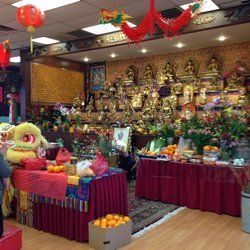
As I grew up, the idea of religion being a part of one’s public life began to tear at its seams. My cousins, unlike my family, were raised Catholic. Whenever they talked about Jesus, Mary, John, and the other figures of their holy scriptures, it was always as if we were a member of their community. Once we escaped from the confines of our houses, however, all talk of religious melted away, and I was once against left with the uncomfortable feeling of having peered into the most intimate parts of my cousins’ lives without their knowing.
Attending the local Chinese school only brought about more of this feeling. A large majority of my town belonged to the local Chinese-American Catholic church, so many students found no problem with speaking about their faith. Anytime they asked me about why I didn’t join, I would offer up an explanation - I wasn’t Catholic, my family didn’t believe in their religion, we didn’t belong in the community. While I tried to be open-minded about their faith, I found that they never tried to understand where I came from. Perhaps they regarded Buddhism this way because it was a minority where we lived, perhaps it was because their parents didn’t teach them about other religions and they subsequently did not understand the distinctions. I was never sure. Nonetheless, the awkward feeling of taboo was always there, and I knew it was felt on both sides of the coin.
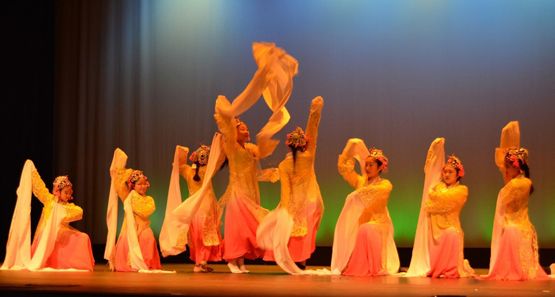
Of course, there were other religious minorities in my town as well - Muslims, Jews, and a few other Buddhist families. However, apart from those who shared the same religion, no one was ever open about their beliefs. The few times that religion did come up in conversations, it was always strained and quickly ended.
We may have shared stories about religious holidays and religious figures in history, but actually sharing the origins of our religions’ beliefs was never something that came across the minds of anyone I met. Sure, I read online about the vast world of faiths that existed beyond the confines of my own, but the barrier between even my peers’ and my own religions were always far too high to scale.
When I moved to New York City shortly after turning thirteen, I remember stumbling into a mecca of diverse, open-minded, and religious individuals who were unafraid to talk about their heritage and backgrounds. Whereas I knew perhaps one other family who was Buddhist in my closed neighborhood, here, I was meeting individuals who were Muslim, Sikh, Jewish, Atheist, and even those whose religions I’d never known.
I would like to say that I was unafraid to speak to them about their religions early on, but that would be far from the truth. My close-guarded upbringing didn’t allow me to have the freedom to speak about my beliefs, nor did it give me the proper backing to understand the beliefs of others. My peers never bothered with religious discussion - it was always a matter of belonging or not belonging to a community.
Here, however, I was realizing more and more than despite what I perceived the religious world to be, it was nowhere near as homogenous as I’d once perceived. Decades of clashing cultures had rendered the streets and neighborhoods of New York far more open than most parts of the country I’d been to before. In my neighborhood especially, I found that residents of Queens were far more open to share their personal backgrounds and stories. What I learned in the short first few months of living in the city eclipsed what I believed was the face of religion for my entire childhood.
Extracting exact figures for religious representation in the United States is easy. A simple Google search reveals the exact statistics of the latest survey given across religious groups by a variety of sources.
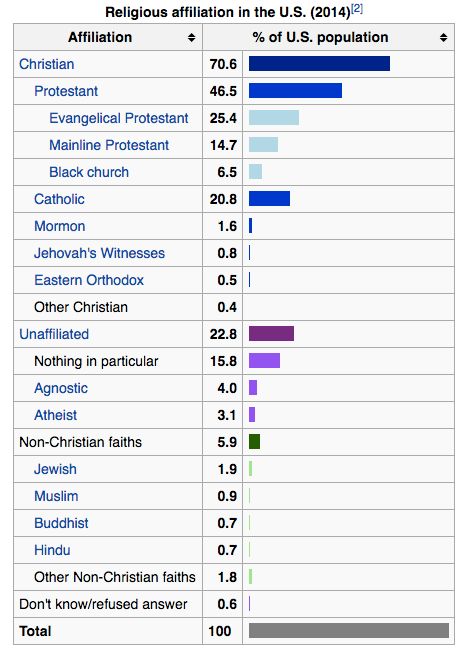
However, figuring out the social dynamics that control religious diversity is not. A town, such as the one I grew up in, may seem to be religiously diverse. With its large assortment of different faith groups living in close proximity, even the majority Catholic demographic would allow it to be categorized as a religiously mixed population. Nonetheless, there was nothing religious or diverse about my hometown.
The problem we face when it comes to religious diversity is opening up the conversation. Coming to New York allowed me to understand the possibilities that existed when different voices came together to form a new narrative. Nonetheless, even in one of the most religiously diverse cities in the world, conflict still emerges - constantly.
Religious diversity doesn’t require simply acceptance of other religions. It requires conversation - understanding why people believe in the things they do. Celebrating the rich history and culture of all religions and accepting that there may be differences in our beliefs, but at the core we’re all trying to understand the world we live in and make sense of the disarray that is our universe. From ancient times until our modern society, religion has been a way for us to bring communities together, to celebrate our life and the things that make up our world. Without continuing the conversation and engaging religiously diverse groups to explore beyond their boundaries, however, we risk destroying what we’ve built up to this point.
The figures do speak for one side of the issue. The majority of our country, and the world, remains monotheistic, but even within these bounds, there are separations. If we continue down every single branch that exists, within Christians, within Catholics, within Evangelical Protestants, even within New Age religions, we can find that the diversity that exists is real, and it is poignant. Nonetheless, the vast majority of people do not see beyond the confines of what they believe, essentially negating the point of having religious diversity in the first place.
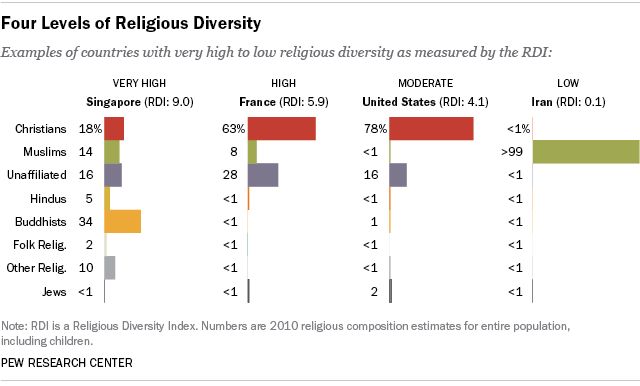
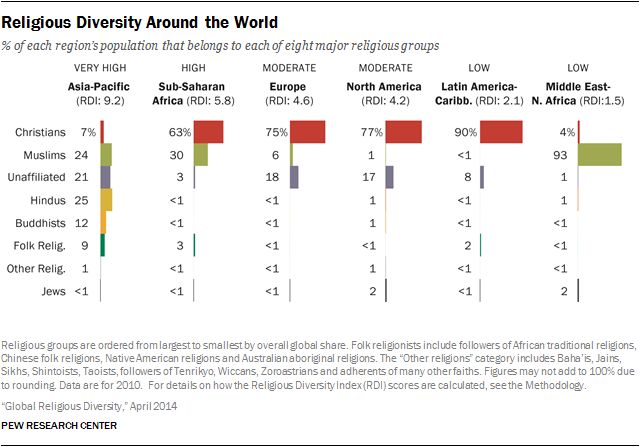
We can argue about religious diversity not existing because of a predominantly Christian culture, but that doesn’t solve the problem of communicating these differences. By bearing arms and continuing to shun other religions that we don’t understand, we risk aggravating our already closed society further against religious discussion.
I wish I didn’t have to grow up in a town where my religion seemed like a secret identity. I wish celebrating holidays didn’t have to feel wrong, that I wasn’t punished for mentioning the Bible in class. I wish we weren’t told how to believe or what to believe, but were rather taught what beliefs existed, and why they exist.
In a world where such diversity exists, it’s foolish not to take action towards preserving the many differences that make each of us and our cultures unique. Religion may be taboo today, but it doesn’t have to remain that way.
